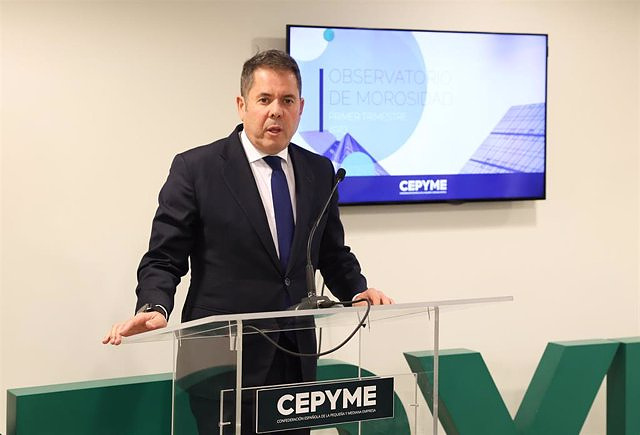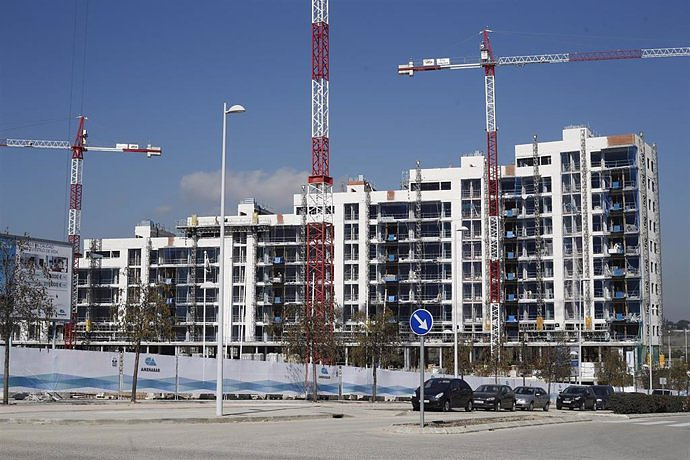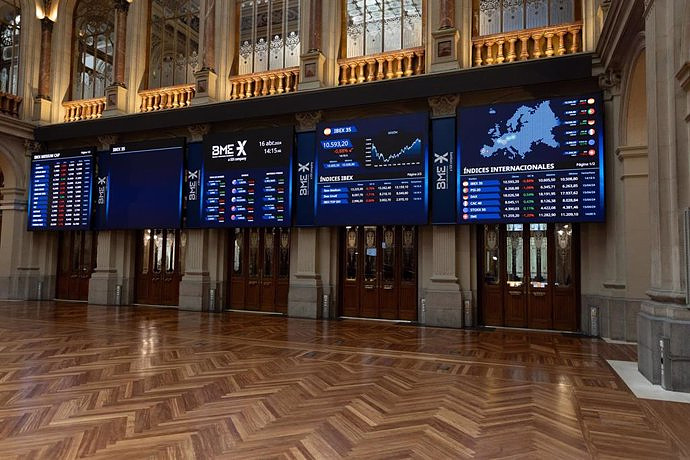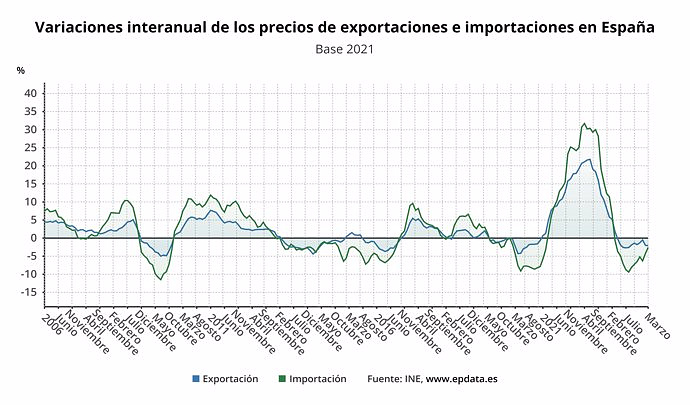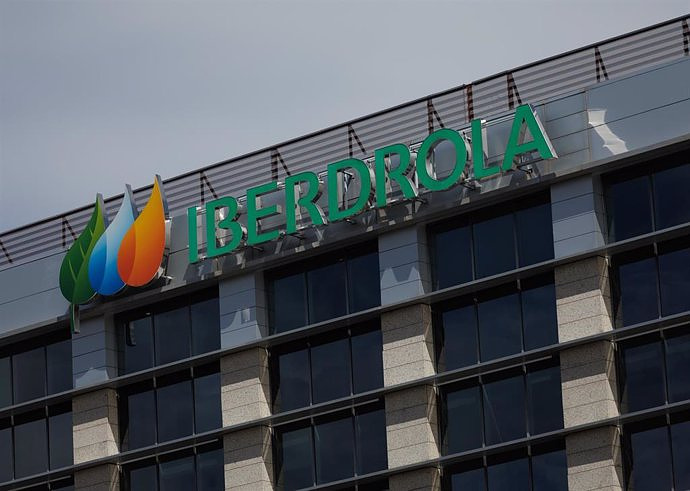MADRID, 28 Ago. (EUROPA PRESS) -
The financial cost of commercial debt for small and medium-sized enterprises (SMEs) skyrocketed in the second quarter to close to 2.4 billion euros, almost double that of the same period of the previous year, due to higher credit costs, according to the Delinquency Observatory prepared by the employer Cepyme with data from Cesce and Informa D
Commercial debt has two components: ordinary and delinquent. The cost of the first amounted to 1,291 million euros in the second quarter, while that of the second reached 1,075 million euros.
Adding the two components, companies faced a total annualized financial cost of 2,366 million euros in the second quarter, 98.5% more than a year earlier and the highest figure since September 2009.
The total commercial debt (ordinary and delinquent) of the SMEs as a whole, which caused the high financial cost associated with the increase in the cost of credit, exceeded 180,000 million euros in the second quarter, of which close to 70,000 million euros corresponded to companies medium-sized companies, 12% more than a year earlier, while micro and small companies added a commercial debt of 110,000 million euros, 5.5% more.
According to the Cepyme report, the financial effort related to the normal tranche of commercial debt (1,291 million euros) tripled for SMEs, totaling almost 1,300 million euros. However, the worst part was taken by medium-sized companies, with a year-on-year increase of 258%, compared to an increase of 175% for small and micro-enterprises.
With regard to the delinquent part of the commercial debt, the financial effort experienced a more contained progress because, according to Cepyme, both for small and medium-sized companies, payment terms were reduced, although not for micro-enterprises.
For SMEs as a whole, the cost of default amounted to almost 1,100 million euros in the second quarter, 40.8% more than a year earlier and the second highest since September 2010, only surpassed by the data from first quarter of 2023.
Cepyme denounces that to this increase in the cost of delinquency for SMEs we must add the rise in other costs, such as energy and labor, as well as the effects of inflation, "which reduce their profitability and their ability to negotiate to access the necessary financing in a context of more expensive money as a result of the increase in interest rates".
The quarterly report of the Cepyme Default Observatory confirms that the average payment period (PMP) in commercial operations between companies maintained its downward trend in the second quarter of the year, although at a more attenuated rate than in previous periods.
Thus, the PMP stood at 81.3 days between the months of April and June, compared to 82.1 days in the previous quarter, which makes it the lowest PMP for this period since 2017, but still well above of the maximum legal period of 60 days established by Law.
"The reduction of the PMP from the end of 2021 is the result of the reaction of companies to the environment of high inflation in a double way: on the one hand, shortening the collection periods avoids the reduction of the real value of pending collections caused by the inflation and, on the other, it is a way of avoiding the increase in financial cost caused by the increase in interest rates on commercial debt," explains Cepyme.
Despite the general reduction in the PMP, the average payment period increased in large companies in the second quarter to 87.4 days, which is 41.3 days more than in the same quarter of the previous year.
Cepyme attributes this strong rebound due to the "base effect" that involves comparing the second quarter of this year with the same of 2022, a period in which the PMP was abnormally low. "Large companies have modified their payment and collection policy by changing the context of interest rates, which are no longer negative," says the employer.
Among SMEs, medium-sized companies had the highest PMP in the second quarter, with 89.9 days, while small companies registered the lowest PMP, with 79.4 days, followed by micro-enterprises, with 81 days.
By autonomous communities, the average payment period increased in interannual terms in eight autonomous communities and in Ceuta and Melilla. The maximum difference between the average payment periods of the different autonomous communities reached 25.9 days in the second quarter when comparing the highest PMP, that of Murcia (95.7 days), with the least pronounced, that of Castilla y Leon (69.8 days).
According to Cepyme, 29.5% of invoices were paid on time in the second quarter, so seven of each were paid late. Large companies paid 14.2% of the invoices they received on time, compared to 49% in the case of micro-enterprises, 46% in small companies and 29.4% in medium-sized ones.
The average payment period was reduced in the four large sectors of activity in the second quarter, although all of them are above the legal period of 60 days. In industry, the PMP fell to 77.3 days, 3.8 days less than in the same period of the previous year and the lowest historical record for this sector.
However, this data in the industry sector responds to the particular behavior of the electricity, gas and water subsector. In fact, the average PMP of the industrial sector, excluding this subsector, reached 83.1 days, with a year-on-year increase of 3.8 days.
For their part, the agri-food and services sectors registered similar average payment periods, of 73.9 and 73.5 days, respectively. In construction, the PMP stood at 97.3 days, with a year-on-year reduction of 1.5 days.

 Exploring Cardano: Inner Workings and Advantages of this Cryptocurrency
Exploring Cardano: Inner Workings and Advantages of this Cryptocurrency Seville.- Economy.- Innova.- STSA inaugurates its new painting and sealing hangar in San Pablo, for 18 million
Seville.- Economy.- Innova.- STSA inaugurates its new painting and sealing hangar in San Pablo, for 18 million Innova.- More than 300 volunteers join the Andalucía Compromiso Digital network in one month to facilitate access to ICT
Innova.- More than 300 volunteers join the Andalucía Compromiso Digital network in one month to facilitate access to ICT Innova.-AMP.- Ayesa acquires 51% of Sadiel, which will create new technological engineering products and expand markets
Innova.-AMP.- Ayesa acquires 51% of Sadiel, which will create new technological engineering products and expand markets Nadal is still alive and exciting in Madrid
Nadal is still alive and exciting in Madrid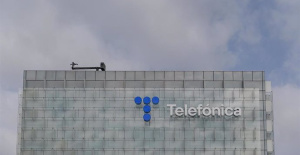 The Treasury injected another 500 million into the SEPI in March to purchase Telefónica shares
The Treasury injected another 500 million into the SEPI in March to purchase Telefónica shares The complaints from ERC and PP against Sánchez's interview do not reach the JEC in time, which did not consider suspending it
The complaints from ERC and PP against Sánchez's interview do not reach the JEC in time, which did not consider suspending it Occupancy in Spain for the May long weekend exceeds 80%, with Andalusia and the Canary Islands as preferred destinations
Occupancy in Spain for the May long weekend exceeds 80%, with Andalusia and the Canary Islands as preferred destinations How Blockchain in being used to shape the future
How Blockchain in being used to shape the future Not just BTC and ETH: Here Are Some More Interesting Coins Worth Focusing on
Not just BTC and ETH: Here Are Some More Interesting Coins Worth Focusing on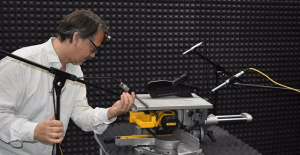 They create a bank of machinery sounds to prevent breakdowns through artificial intelligence
They create a bank of machinery sounds to prevent breakdowns through artificial intelligence UPV students build a prototype of a wooden house to move to Equatorial Guinea
UPV students build a prototype of a wooden house to move to Equatorial Guinea The UA opens the call for the Impulso 2024 Awards for the best innovative business initiatives
The UA opens the call for the Impulso 2024 Awards for the best innovative business initiatives ALI, virtual assistant from Alicante, internationally recognized by the OECD
ALI, virtual assistant from Alicante, internationally recognized by the OECD A million people demonstrate in France against Macron's pension reform
A million people demonstrate in France against Macron's pension reform Russia launches several missiles against "critical infrastructure" in the city of Zaporizhia
Russia launches several missiles against "critical infrastructure" in the city of Zaporizhia A "procession" remembers the dead of the Calabria shipwreck as bodies continue to wash up on the shore
A "procession" remembers the dead of the Calabria shipwreck as bodies continue to wash up on the shore Prison sentences handed down for three prominent Hong Kong pro-democracy activists
Prison sentences handed down for three prominent Hong Kong pro-democracy activists ETH continues to leave trading platforms, Ethereum balance on exchanges lowest in 3 years
ETH continues to leave trading platforms, Ethereum balance on exchanges lowest in 3 years Investors invest $450 million in Consensys, Ethereum incubator now valued at $7 billion
Investors invest $450 million in Consensys, Ethereum incubator now valued at $7 billion Alchemy Integrates Ethereum L2 Product Starknet to Enhance Web3 Scalability at a Price 100x Lower Than L1 Fees
Alchemy Integrates Ethereum L2 Product Starknet to Enhance Web3 Scalability at a Price 100x Lower Than L1 Fees Mining Report: Bitcoin's Electricity Consumption Declines by 25% in Q1 2022
Mining Report: Bitcoin's Electricity Consumption Declines by 25% in Q1 2022 Oil-to-Bitcoin Mining Firm Crusoe Energy Systems Raised $505 Million
Oil-to-Bitcoin Mining Firm Crusoe Energy Systems Raised $505 Million Microbt reveals the latest Bitcoin mining rigs -- Machines produce up to 126 TH/s with custom 5nm chip design
Microbt reveals the latest Bitcoin mining rigs -- Machines produce up to 126 TH/s with custom 5nm chip design Bitcoin's Mining Difficulty Hits a Lifetime High, With More Than 90% of BTC Supply Issued
Bitcoin's Mining Difficulty Hits a Lifetime High, With More Than 90% of BTC Supply Issued The Biggest Movers are Near, EOS, and RUNE during Friday's Selloff
The Biggest Movers are Near, EOS, and RUNE during Friday's Selloff Global Markets Spooked by a Hawkish Fed and Covid, Stocks and Crypto Gain After Musk Buys Twitter
Global Markets Spooked by a Hawkish Fed and Covid, Stocks and Crypto Gain After Musk Buys Twitter Bitso to offset carbon emissions from the Trading Platform's ERC20, ETH, and BTC Transactions
Bitso to offset carbon emissions from the Trading Platform's ERC20, ETH, and BTC Transactions Draftkings Announces 2022 College Hoops NFT Selection for March Madness
Draftkings Announces 2022 College Hoops NFT Selection for March Madness